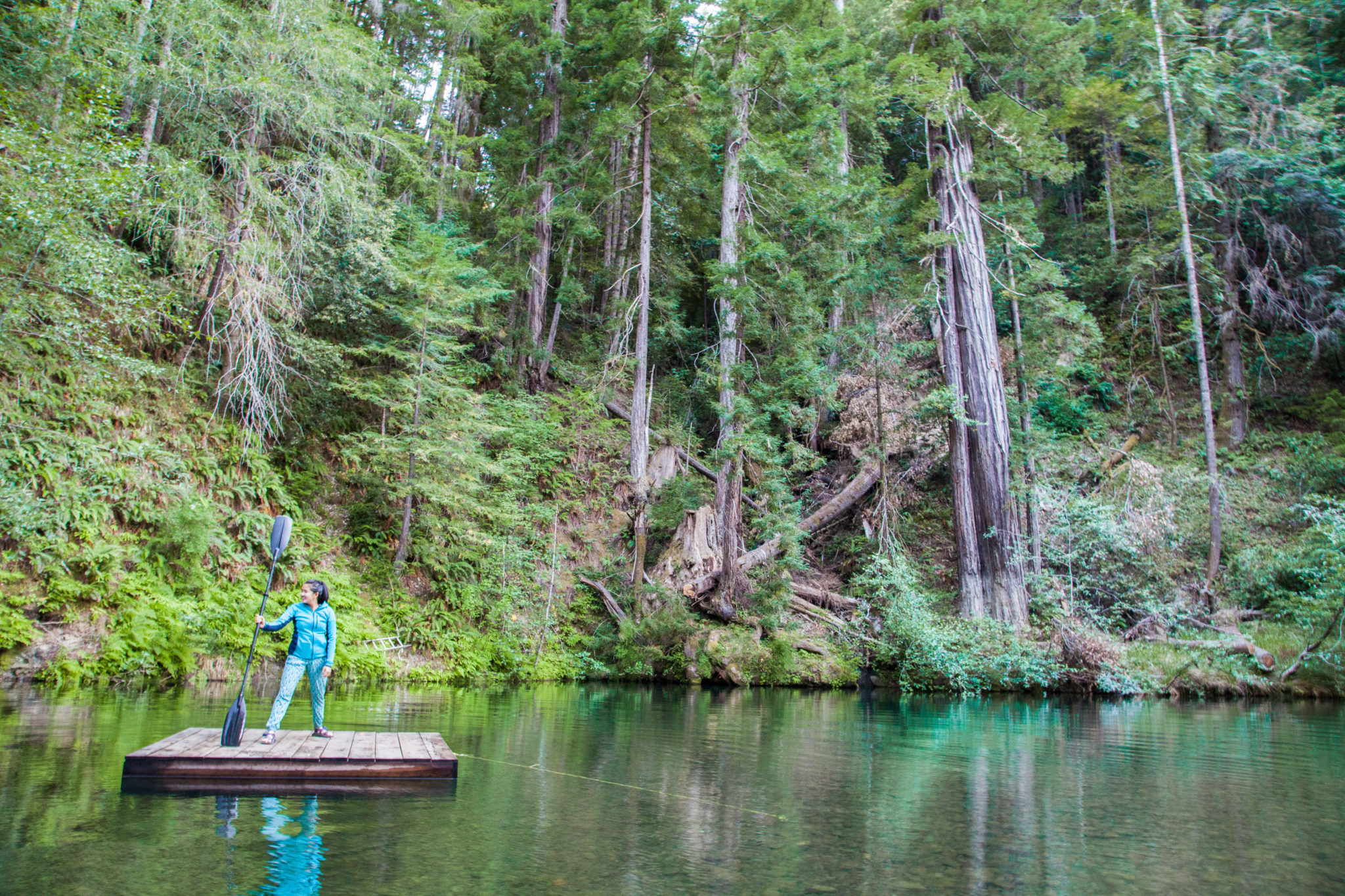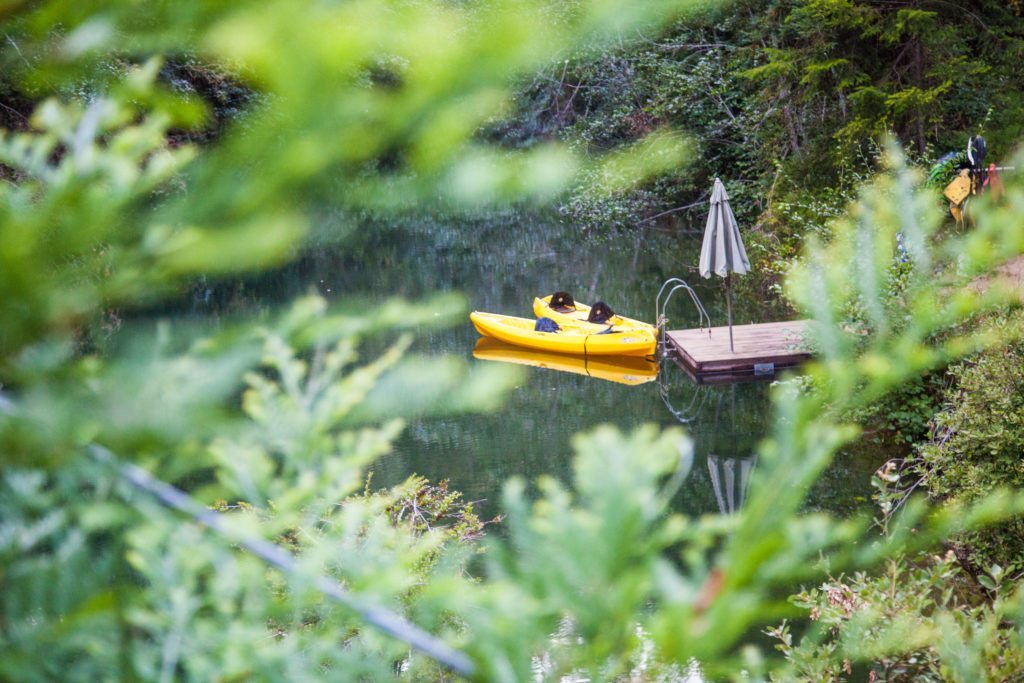
As the sun sets on summer I’m finally getting around to talking about the trips I’ve been on. This past summer has been a bit of a lazy one.
I planned on climbing something every weekend, but I can count the number of alpine starts I got on 2 fingers. Instead, I filled my schedule with backpacking and train camping.
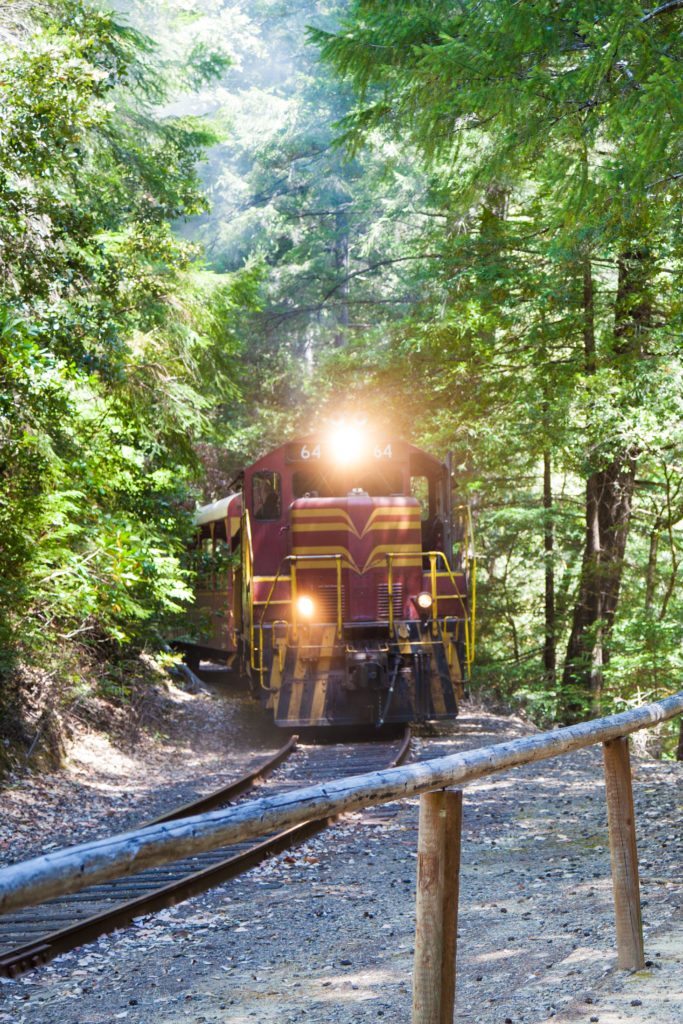
In late July, I set off to Willits for my mom’s first camping trip in god knows how long. We were going to take the Skunk Train to Camp Noyo. No cell service and accessible only by train, it was like a more luxe version of car camping.
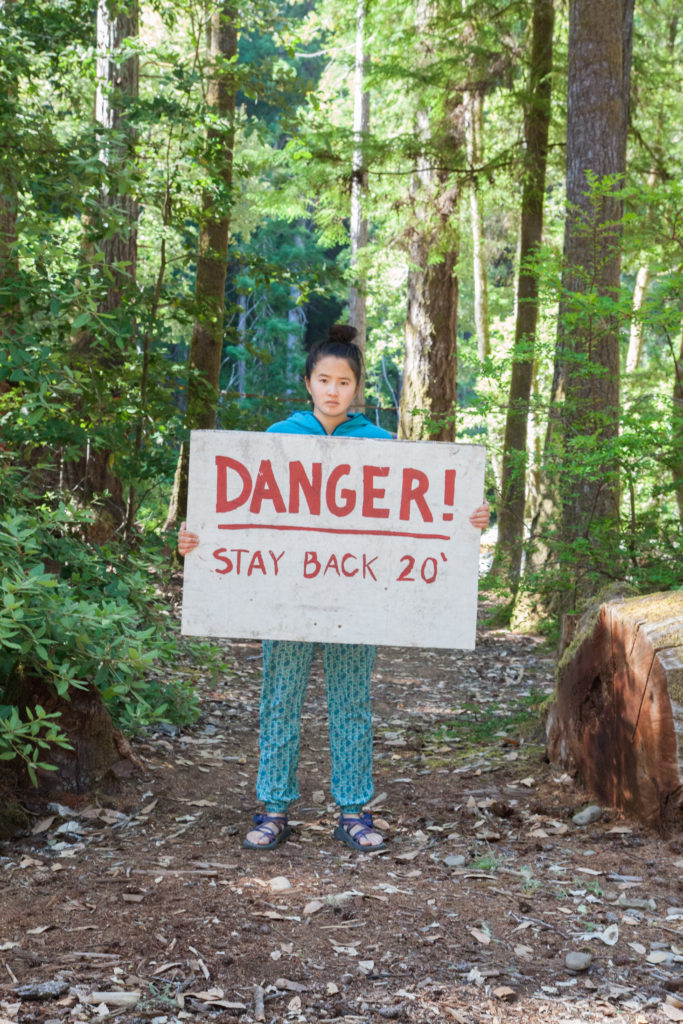
From the Bay Area, Willits is about a 3 hour drive. We left just before 6 to make it to the train station by 9am for check in and loading up our gear. Around 9:15, the Skunk Train backed itself down the tracks to the parking lot for us to toss all our things in.
There’s no special storage for the gear; it all rides in the open air compartment. After all our stuff was on board, we walked back to the station to get in line for the train.
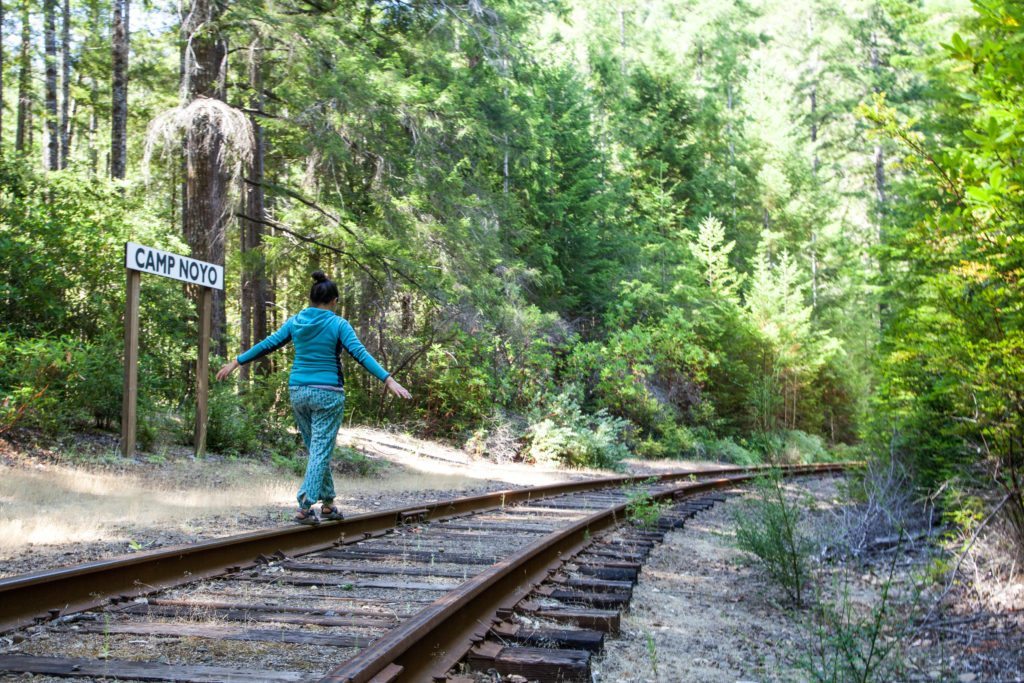
I’m no stranger to trains; I commute on one every day. The Skunk Train hearkens back to the old logging days and travels through second growth redwoods to Northspur, the midpoint between Willits and Fort Bragg, in beautiful Mendocino County.
Once a bustling logging camp that included a store and post office, this is now a picnic area and the final destination on the train. We unloaded all passengers here and then unhitched the open air car to continue on to Camp Noyo.
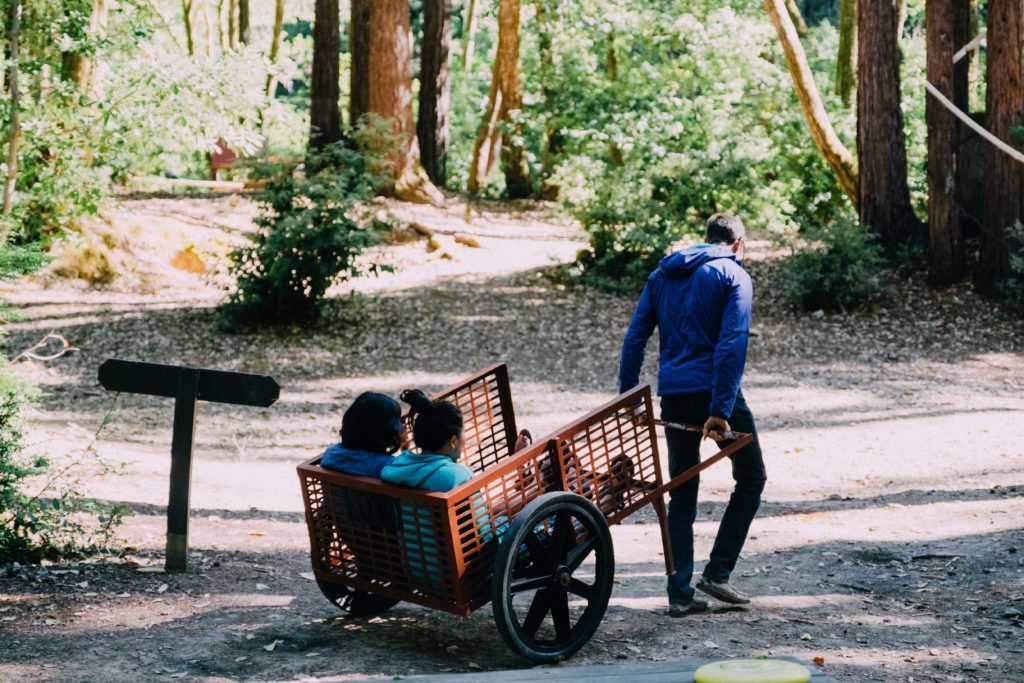
Upon arriving at Camp Noyo, the campsite host greeted us. He outlined a few quick rules, pointed out available hikes and noted wildlife he’d seen, and then took us to our sites. The camp provided carts to haul all the gear to the site.
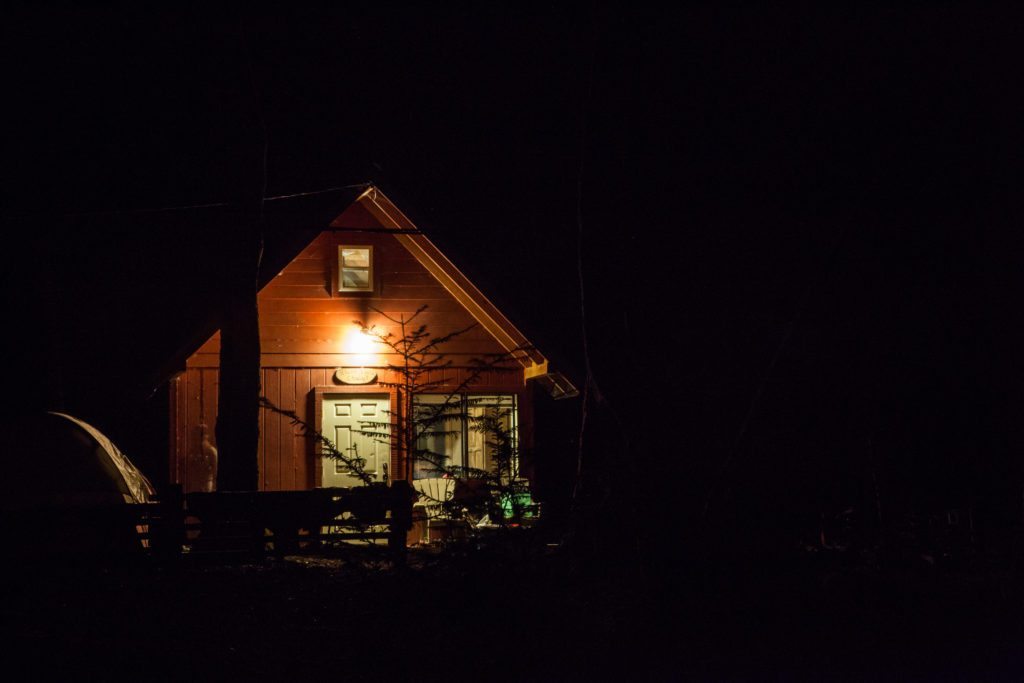
What’s available at Camp Noyo?
Each campsite holds 4-6 people. The only exception is the River Chalet, which holds 8 in a tiny cabin overlooking the river. The sites are all fully furnished with a picnic table, fire pit, gas lamp, stove, and cookware. Don’t come here expecting seclusion and privacy. You can see at least one other camp area from your own.
These aren’t as tightly packed as standard NPS or state park campgrounds, so despite having a party with six children near us, it was still relatively peaceful. We stayed at the Shake City campsite, which houses six people. The river gurgled peacefully behind us. The trees weren’t amazing for hammocking though.
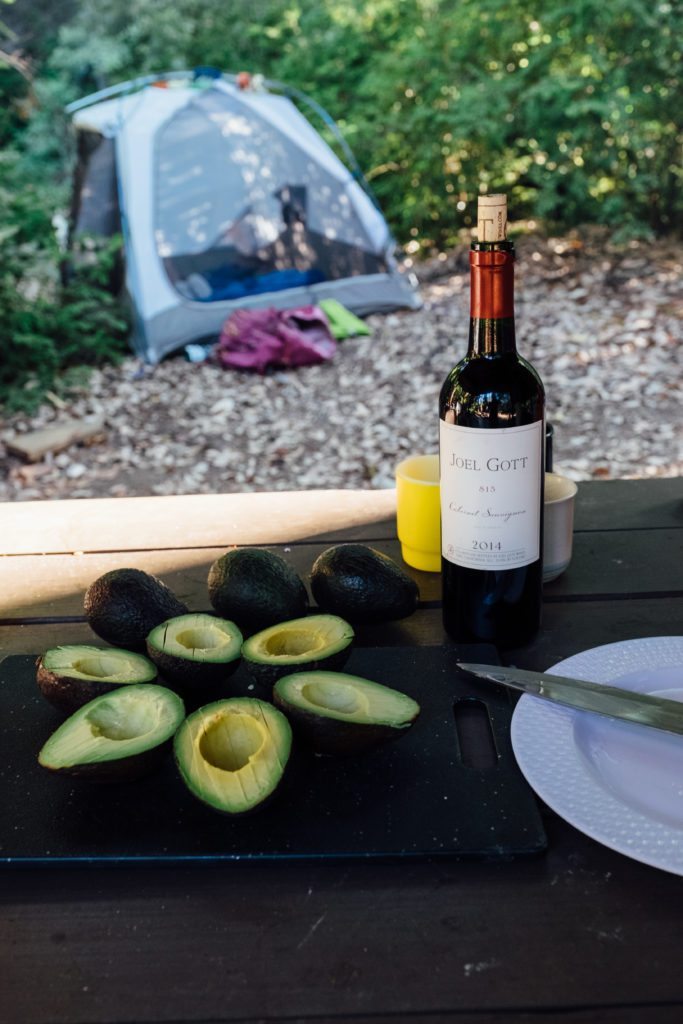
The restroom is shared amongst all the campsites and has flushing toilets and showers. Hot water is available, but campers have to keep the stove burning. Behind the bathroom is an area to chop wood for the stove or for your own personal fires. Outside the building is a large sink area for doing dishes. Dish soap, hand soap, and sponges are available.
What do you need to bring to Camp Noyo?
- A good cooler and ice. You’ll need it to hold all your perishables.
- Tent, sleeping bag, sleeping pads
- A good book
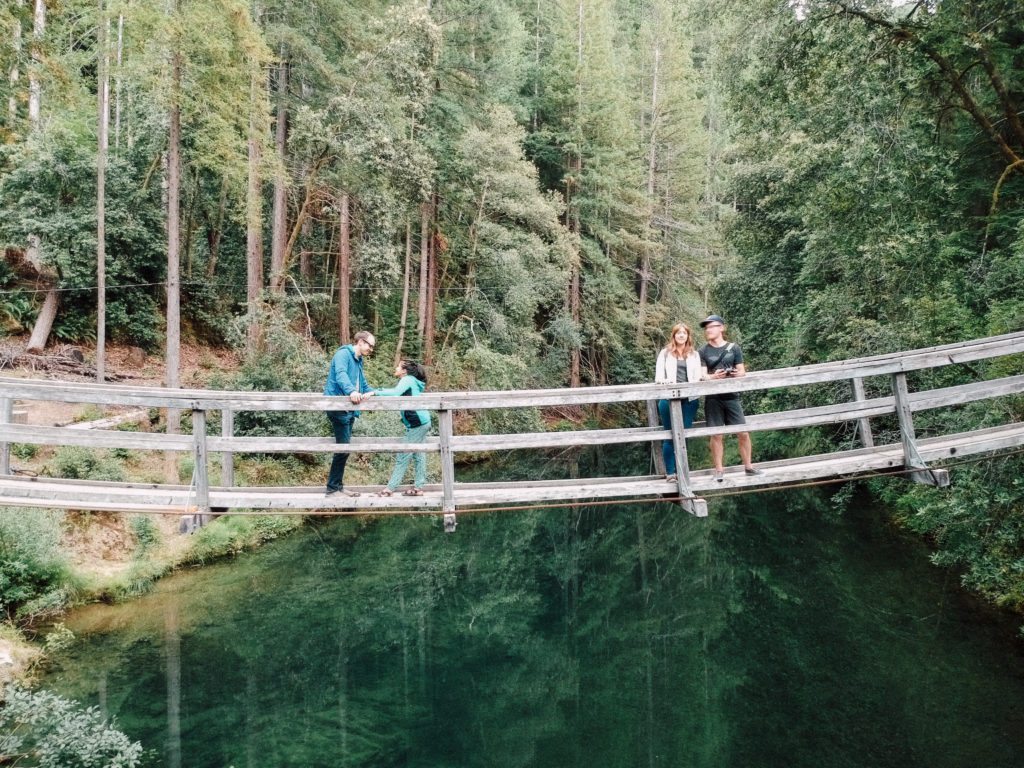
Camp Noyo is a sleepy, little place where time seems to slow, but there was still plenty of outdoor fun to be had. A seasonal dam creates a giant swimming area, deep enough for jumping off a tree and floating dock. A little further upstream, jump the plank, if you dare. If the water’s a little nippier than you’d like, float upstream in kayaks (single and tandem) or canoes. Supposedly there are fish too.
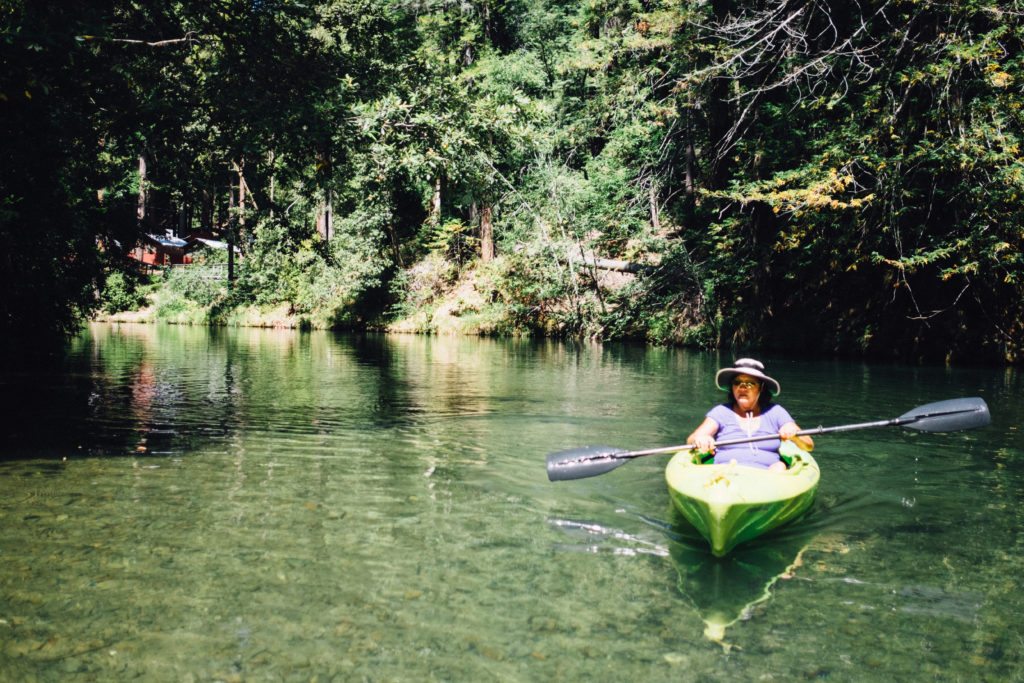
What can you do at Camp Noyo?
If you don’t feel like paddling, there are two hikes available. Hike the private road two miles up the hill. There are plenty of blackberries waiting for picking, if in season. Keep your eyes peeled for bear scat. Though unremarkable in almost every way, this hike is a nice option if you want to get moving. The other option is to hike two miles down the tracks to a trestle. The railroad was damaged in previous winter storms, so trains are no danger to pedestrians from either end.
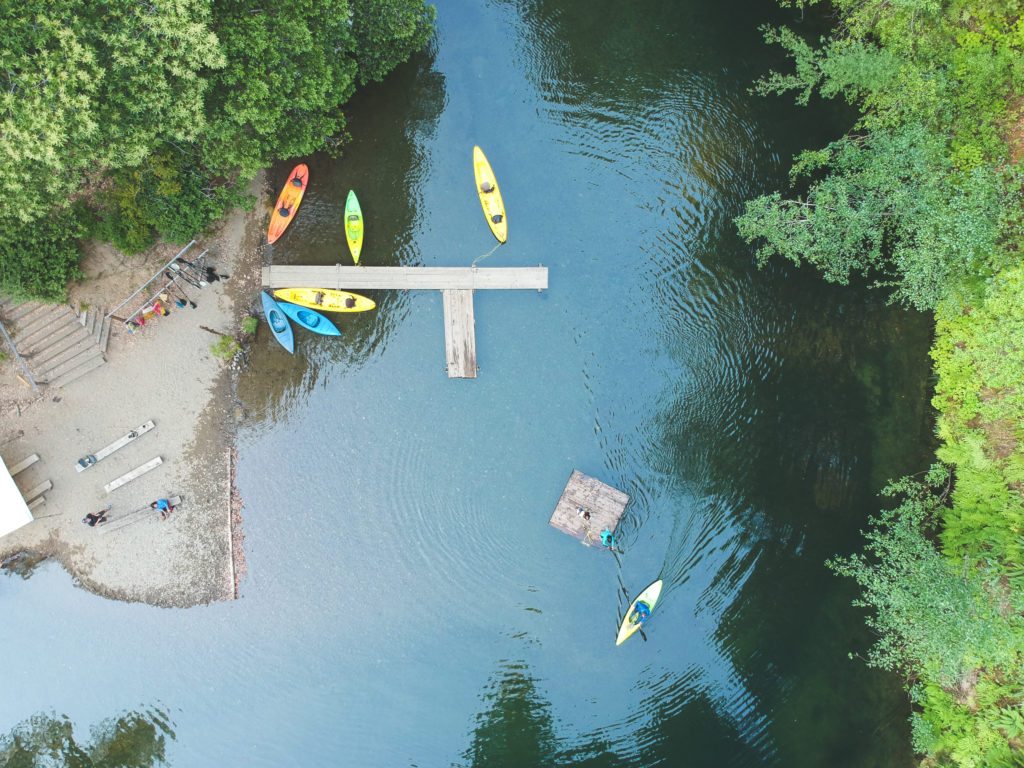
We stayed at Camp Noyo for 3 days and 2 nights, but I found myself wishing we were staying longer. Every day, we paddled until our arms and backs were tired. We swam until we were shivering so hard our teeth threatened to fall out. Napping in the hammocks until we were eaten alive by mosquitoes was a daily activity. We cooked elaborate camp dinners. Time slowed down in the idyllic redwoods. It was incredibly relaxing.
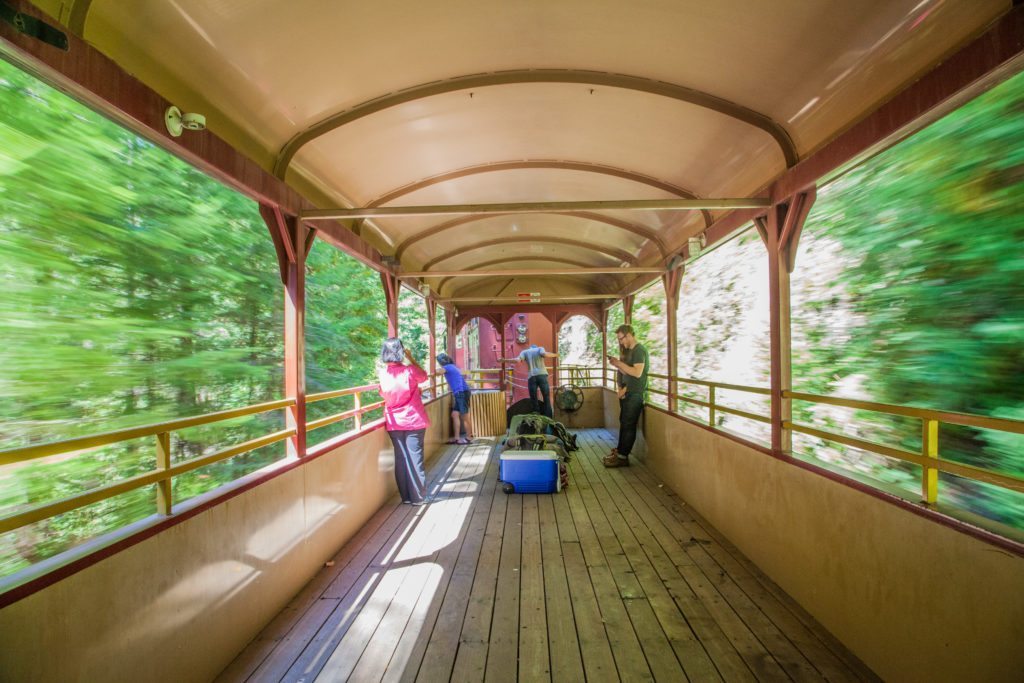
On our last day, we gathered all our things and the Skunk Train picked us up at Camp Noyo around noon to take us back to Willits. I was sad to end our mini-vacation.
How to get to Camp Noyo
Camp Noyo is usually accessible via the Skunk Train. Tickets for the Skunk Train cost $84 for adults, $42 for young children, $10 for tiny children and $10 for dogs. Train tickets are separate from campsite fees.
However, because of heavy winter storms, several sections of the track that leads to Camp Noyo are currently inaccessible.
Currently, the way to get to Camp Noyo is by car. Directions will be emailed to you a week prior to your departure. You’ll meet at the Camp Noyo assembly area for an escort into the camp.
What’s the cost for Camp Noyo?
Campsites are $110 (4 people) or $140 (6 people) per night, with a two night minimum. The River Chalet is $220 per night.
The cabins across the river from the campsite can be rented out with group pricing, perfect for intimate weddings or family get togethers. The two-night price is $3,800, and includes all meals, cabins and full use of the property.
Camp Noyo is dog friendly. The camp is only open weekends from May through October. There may be availability during the week as well. To book, contact Camp Noyo.
Thank you to the Skunk Train and Camp Noyo for hosting us. We can’t wait to come back.
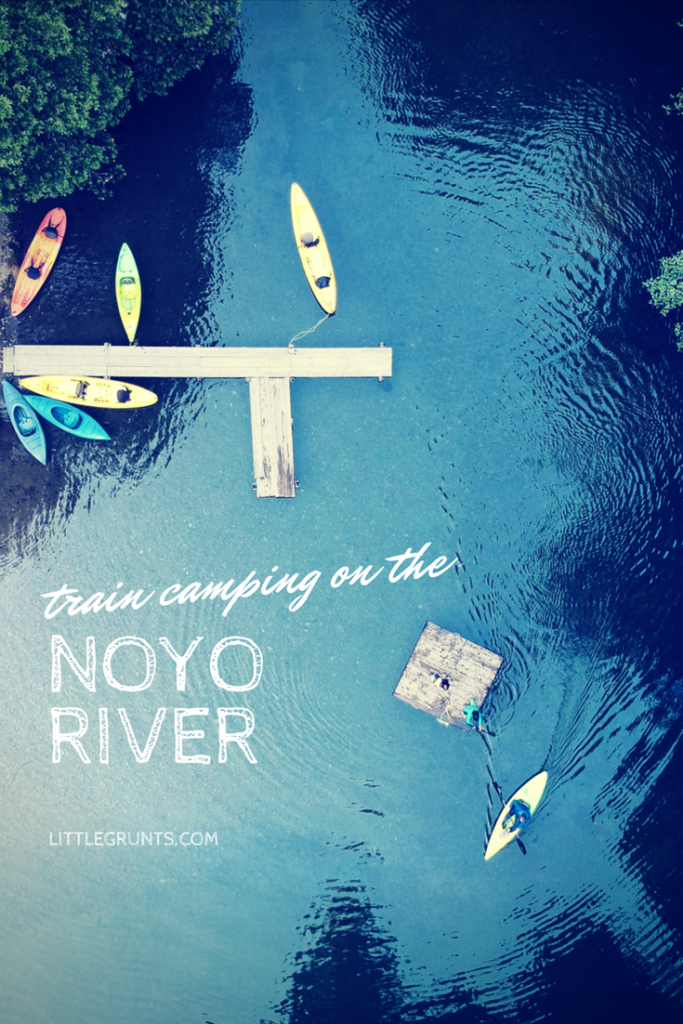
Last updated on May 16, 2019.

